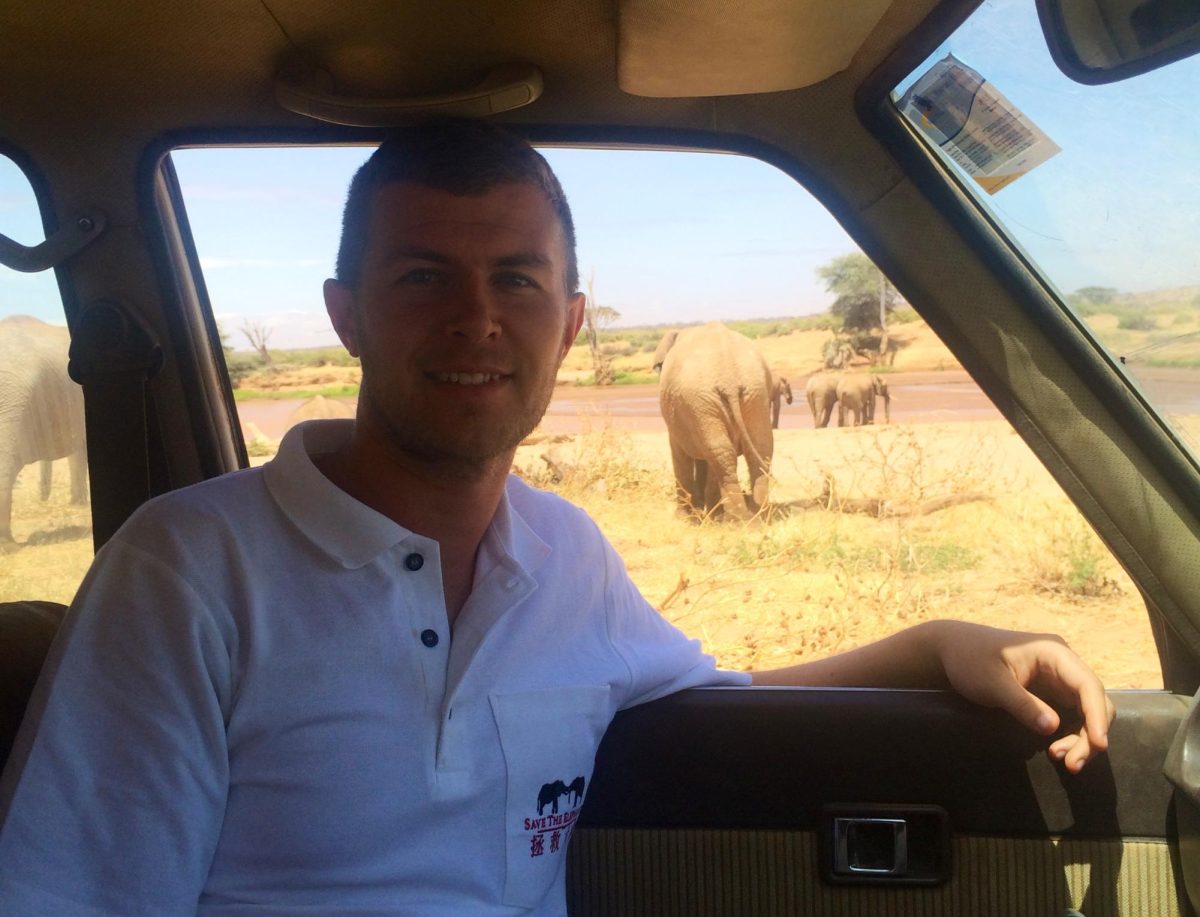Over the last 75 years, the population of savannah elephants worldwide has declined by more than 50 percent, making them one of the most endangered species in Africa. With a decreasing population, there also comes threats to the elephants’ environment, which faces dangers such as climate change and lack of plant diversity.
Campus Sustainability Coordinator Bradley Spanbauer is an associate biology lecturer at Oshkosh, with a background in tropical and community ecology. Since earning his master’s from the university, Spanbauer has focused his attention on the future of elephant populations and how their endangerment can influence the ecosystem in which they thrive.
Spanbauer specializes in elephant seed dispersal, a process in which seeds are transported away from their parent plant and germinated in another area through elephant digestion. Seed dispersal is a crucial factor in tree growth.
“Elephants are very good dispersal agents because the size of their mouth allows them to swallow their food whole,” Spanbauer explained. “When they pass it out after a couple of days, the seeds are now growing in a ball of fertilizer, and this helps with tree recruitment.”
According to a study conducted by Spanbauer in Tanzania in 2015, elephants are creating plant diversity across the savannah through digestion, with their dung acting as both a fertilizer and a protectant against insect predators. Savannah elephants are some of the most important seed dispersers in Africa, traveling up to 200 kilometers to fertilize these seeds.
“Elephants contribute to eating the seeds either directly off the tree or off the ground underneath the tree,” Spanbauer said. “They’re working their way through the elephant’s digestive system. The elephants are spreading these seeds out into other parts of the environment, which helps enhance genetic diversity by spreading those genes out across the landscape.”
Along with his work studying seed dispersal, Spanbauer has also taken the time to investigate not only how elephants benefit their environment, but also how they are put at risk due to the illegal ivory trade in Africa. He spent the summer of 2015 as an intern for Save the Elephants, a conservation effort based in Nairobi, Kenya.
While in Kenya, Spanbauer found that due to hunting, elephant genetics are being modified in terms of tusklessness. Tusks are genetically determined and can occur in both sexes. However, a lack of tusks in males can result in poor mating, which could lead to a fall in reproduction rates.
“If humans are hunting the elephants that have large tusks, those elephants are not going to pass those genes on to their offspring,” Spanbauer explained. “Females choose to mate with males who have large tusks because that’s a sign of a healthy male carrying good genes. Without tusks, it could potentially make it hard for males to mate.”
The trade of ivory became illegal in 1989, but poaching continues to be an issue in Africa. Despite the lack of legality in ivory harvesting, hunting is still legal in many African countries such as Botswana and Zimbabwe.
The killing of elephant populations could cause not only extinction, but could also lead to harmful impacts on climate change in the continent and its surrounding areas. Without elephant seed dispersal, tree recruitment will become scarce in these areas, causing a dramatic drop in oxygen and moisture in the air. Replanting trees can replenish plant diversity, but Spanbauer does not see human intervention as impactful as natural seed dispersal.
“Humans are changing the landscape and natural processes like elephant tree recruitment are being impacted negatively,” Spanbauer said. “Some trees may not come back, even if people step in to help. There have been some tree species that do not return after replanting. Many of these seeds need to pass through the animal digestive tract to gain nutrients to grow.”
Misty McPhee, an associate professor of environmental studies at UWO who has worked alongside Spanbauer, sees the fall in elephant populations as not only a continental problem, but as a global problem. Losing this source of dispersal will change how ecosystems work, and eventually change hydrologic and carbon cycles. These changed cycles will not only affect animals and plants, but also human populations.
“All of these huge planetary biogeochemical processes are being shifted,” McPhee explained. “Those are going to affect water and access to water for people. Those then have huge humanitarian implications for those changes. One small thing causes this big cascade of effects.”
McPhee, who focuses on conservation biology, said that diminishing animal populations could have a domino effect on natural evolution processes and change ecosystems for good, to the point where the damage will be irreparable.
“Biodiversity loss implications are very real,” McPhee stated. “From previous extinctions, we know that nothing is replaced exactly as it was 10 million years ago. If we get rid of these species, we are changing the course of evolutionary history for millions of years to come.”
Savannah elephant seed dispersal is an important process for not only African ecosystems, but for evolution of future species. Spanbauer hopes to return to Tanzania in order to continue his conservation efforts, believing that illegal ivory trade is not only harming the elephants themselves, but also the environment in which it takes place.
“No one needs an ivory trinket on their shelf,” Spanbauer stressed. “You cannot really get the ivory off the elephant without hurting or killing them. Without elephants, the land will lose tree growth and moisture and eventually suffer drought. So, ivory needs to stay right where it is, which is on elephants that are alive, happy, reproducing and roaming around Africa.”


















